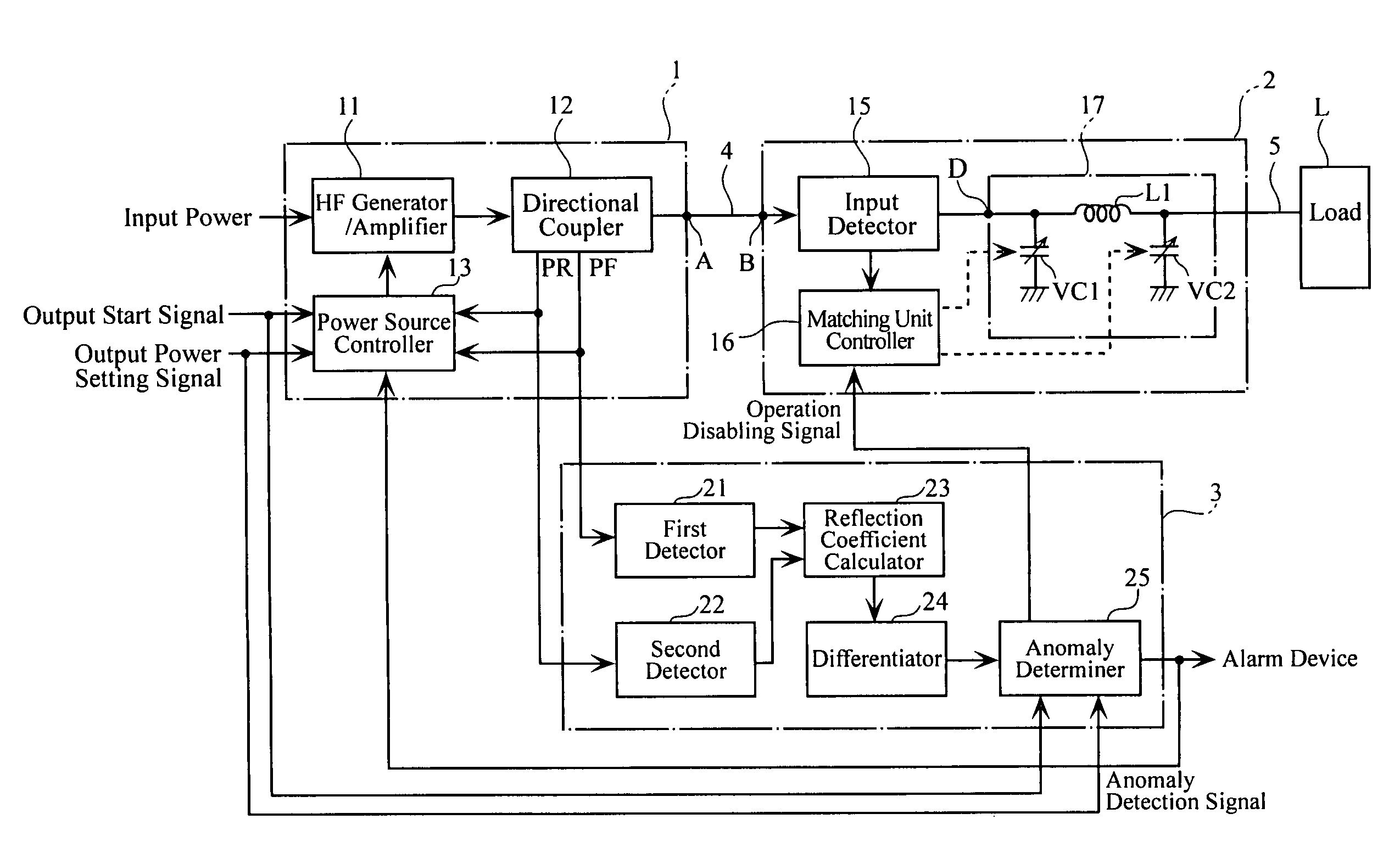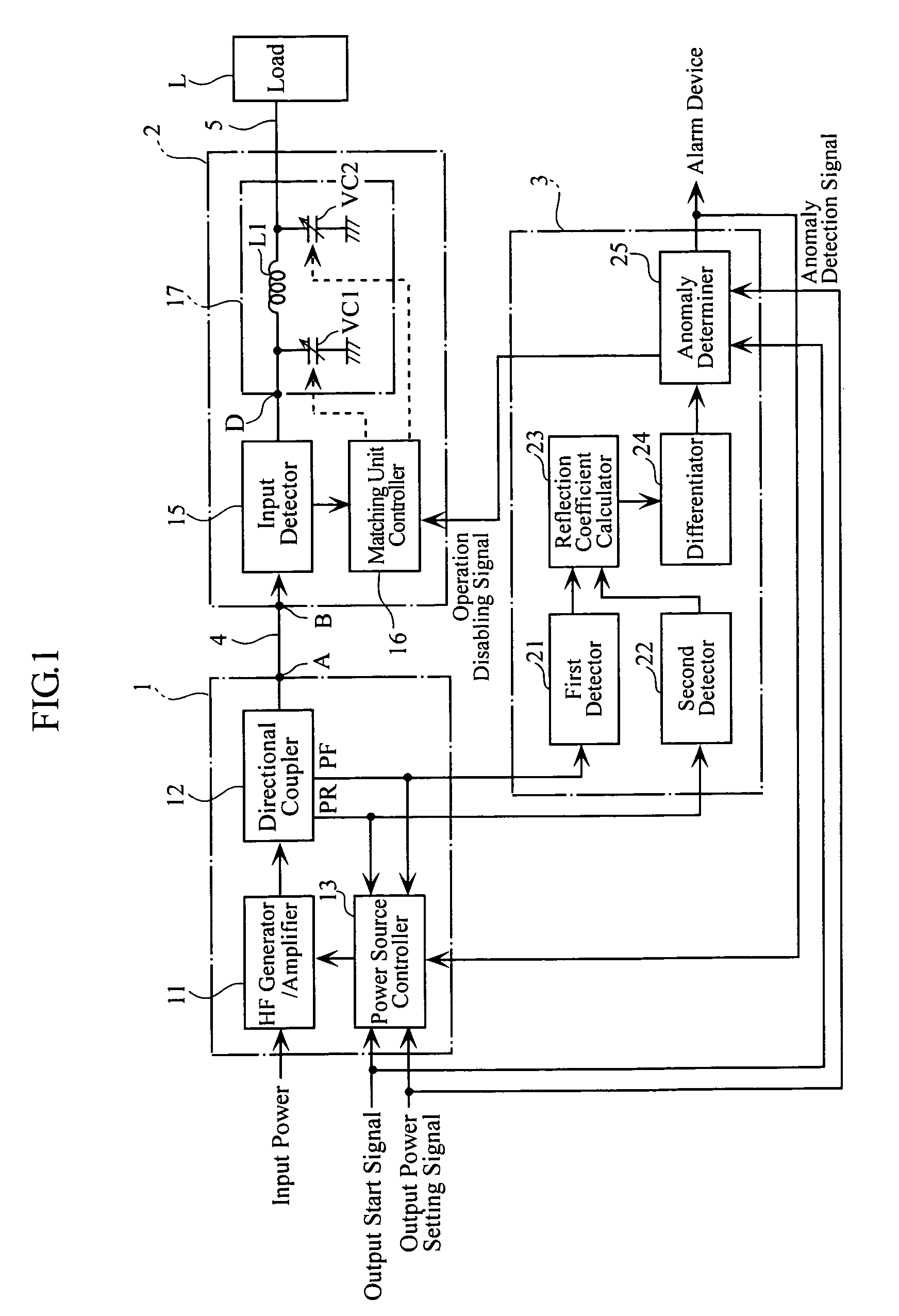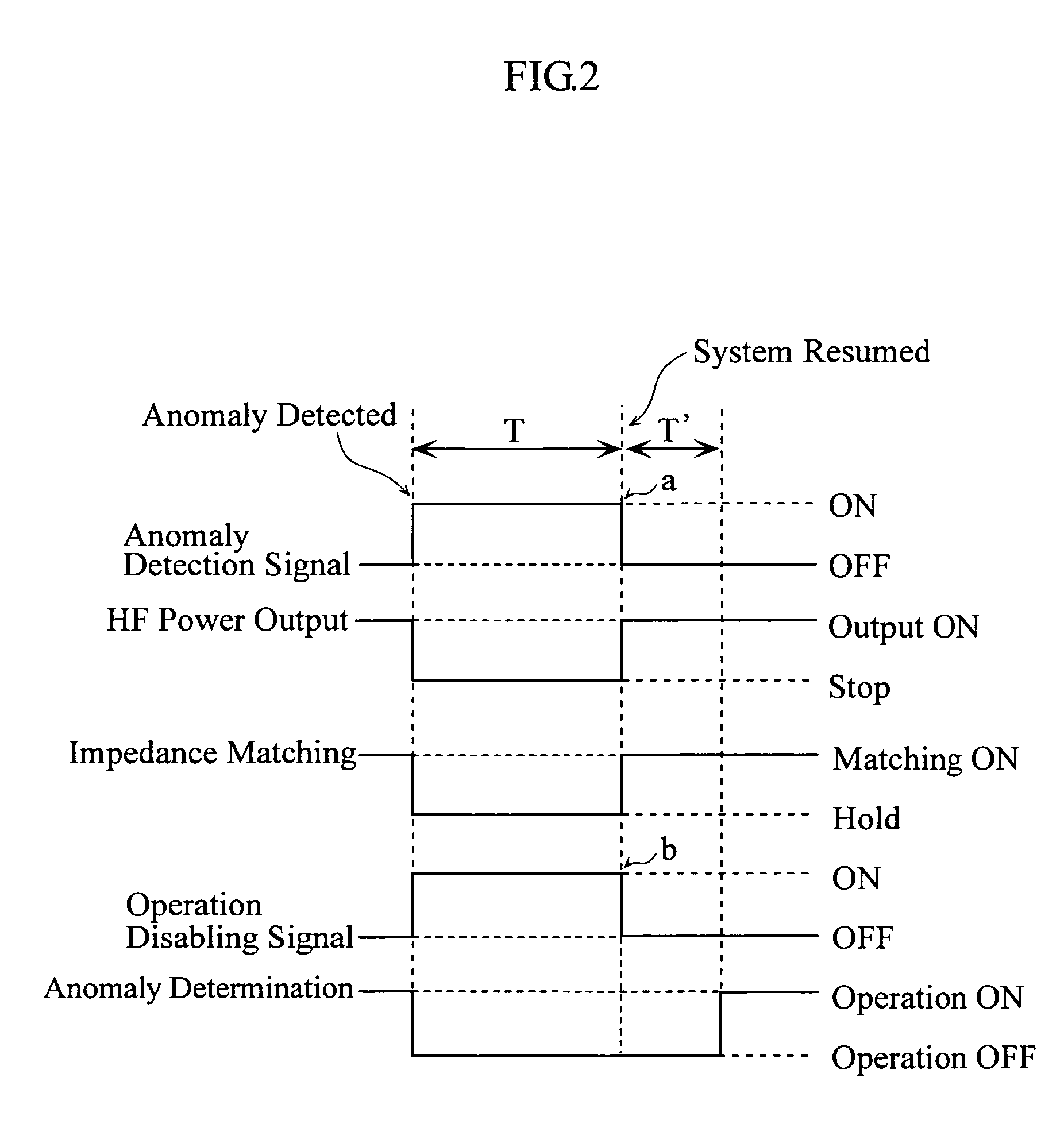High-frequency power supply system
a high-frequency power supply and power supply technology, applied in the field of high-frequency power supply systems, can solve the problems of destroying damaged components further, reducing the reflection coefficient, and not being able to detect such anomalies in the conventional high-frequency power supply system
- Summary
- Abstract
- Description
- Claims
- Application Information
AI Technical Summary
Benefits of technology
Problems solved by technology
Method used
Image
Examples
embodiment 1
[0103]FIG. 1 shows a configuration of a high-frequency power supply system of the present invention. The system supplies high-frequency power necessary for processing such works as semiconductor wafers and liquid crystal substrates, for performing e.g. plasma etching. The high-frequency power supply system includes a high-frequency power source 1, an impedance matching unit 2, an anomaly detector 3, a transmission line 4, a load connecting section 5 and a load L which is provided by a plasma processing apparatus.
[0104]The high-frequency power source 1 is connected with the impedance matching unit 2 via the transmission line 4 provided by e.g. a coaxial cable. The impedance matching unit 2 is connected with the load L (a plasma processing apparatus for example) via the load connecting section 5 provided by e.g. a copper plate which is shielded against electromagnetic leakage. In addition, the high-frequency power source 1 is connected with the anomaly detector 3. Note that although ...
embodiment 2
[0169]For this reason, in the present Embodiment 2, both the differential value dΓ / dt of the reflection coefficient Γ and the differential value dZ / dt of the impedance Z are obtained whereby anomalies occurring specifically in the load L are identified and detected.
[0170]Since the anomaly determiner 25 detects anomalies based on the differential value dΓ / dt of the reflection coefficient Γ and the impedance differential value dZ / dt, detection is made instantaneously, or more quickly than in methods which rely only on the magnitude of the reflection coefficient Γ or in methods which depend upon the magnitude of the impedance Z.
[0171]Now, description will be made in more specific details. Once the high-frequency power source 1 starts supplying high-frequency power, the high-frequency power source 1 separately detects the forward wave PF and the reflected wave PR of the high frequency wave, and inputs detected signals to the anomaly detector 3. Meanwhile, the impedance matching unit 2 i...
embodiment 4
[0185]As described, in Embodiment 4, anomaly occurrence determination is made not only on the basis of the reflection coefficient differential value dΓ / dt but also on the basis of the reflection coefficient Γ. For example, the system determines that an anomaly exists if the reflection coefficient differential value dΓ / dt is large and the reflection coefficient Γ is large.
[0186]In the above, the anomaly determiner 25 determines presence of an anomaly using an AND operation between the comparison result from the first comparator 28 and the comparison result from the second comparator 29, i.e. when the differential value dΓ / dt of the reflection coefficient Γ has exceeded the first reference value and the reflection coefficient Γ has exceeded the second reference value. Alternatively, the determiner may use an OR operation between the comparison result from the first comparator 28 and the comparison result from the second comparator 29. Specifically, the anomaly determiner may determine...
PUM
 Login to View More
Login to View More Abstract
Description
Claims
Application Information
 Login to View More
Login to View More - R&D
- Intellectual Property
- Life Sciences
- Materials
- Tech Scout
- Unparalleled Data Quality
- Higher Quality Content
- 60% Fewer Hallucinations
Browse by: Latest US Patents, China's latest patents, Technical Efficacy Thesaurus, Application Domain, Technology Topic, Popular Technical Reports.
© 2025 PatSnap. All rights reserved.Legal|Privacy policy|Modern Slavery Act Transparency Statement|Sitemap|About US| Contact US: help@patsnap.com



